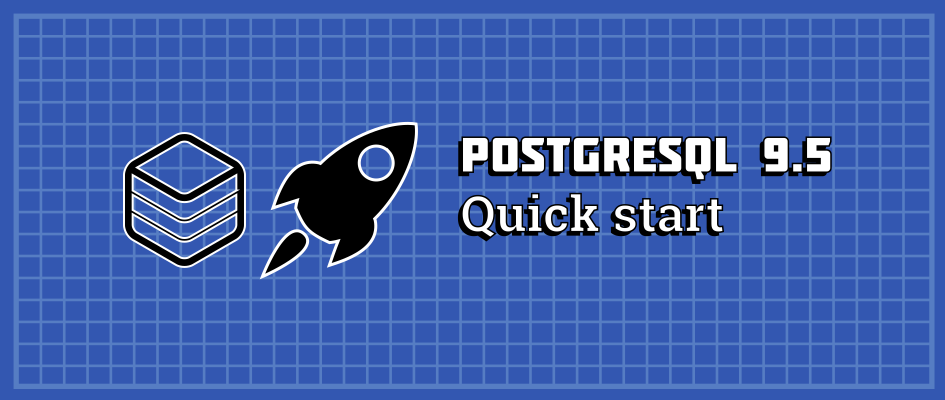PostgreSQL is one of the most popular object-relational database management system (shortened to ORDBMS) and is 100% open-source. It is not purely about relations anymore: PostgreSQL is more and more about NoSQL as well. The following article is a short tutorial to set up PostgreSQL 9.5 on Fedora 24, so it can be used for a development environment. For a production deployment, it is recommended to use a different set-up and harden the service.
The set of PostgreSQL database packages in Fedora’s stable repositories are almost identical to the upstream set of RPMs. There are client tools in the
package. The client library in the
package is often required by various connectors. The most important part of the database, the daemon, is available in the
package. Some more server-side extensions, tools, or supporting packages may be listed by running the following command in a terminal.
$ dnf list postgresql\*
Basic deployment examples may be found in the article on the Fedora wiki as well. Some first steps are also described in the Fedora Developer Portal.
Basic PostgreSQL setup
Start by installing the packages, initializing the data directory, and starting the daemon.
$ sudo dnf install postgresql-server $ sudo postgresql-setup --initdb $ sudo systemctl start postgresql
Now, connect using the superuser by switching to
user via
. Set a password for this superuser.
$ su - postgres $ psql psql (9.5.3) Type "help" for help. postgres=# \password postgres
Creating a user and a database
It’s not a good idea to connect to the database as
superuser from applications (like you don’t work as the root user in Linux all the time). For that, we’ll need a database and a separate user to access the database. Create them with the following commands.
$ createuser john -P $ createdb --owner=john mydb
We also want to limit the connections to the server from localhost only. Edit
to look like the following example below to do this.
# TYPE DATABASE USER ADDRESS METHOD host all all 127.0.0.1/32 md5 host all all ::1/128 md5 local all postgres peer
This configuration allows all users that provide the password (specific to PostgreSQL) to connect from the localhost. It allows the
user (a.k.a. the superuser) to connect in case the same user is authenticated in the operating system (
). More about this is detailed in the upstream documentation.
Now we can restart the PostgreSQL server so the changed configuration applies.
$ sudo systemctl restart postgresql
We’re all set to use the
user to access the database
now.
$ psql -h localhost -U john mydb Password for user john: psql (9.5.3) Type "help" for help. mydb=> _
At this point, you can work with the database as you need: create tables, fill then with data, and so on.
PostgreSQL in the container
Linux containers (especially Docker) are slowly approaching production systems. It is also not surprising there is a PostgreSQL Docker image provided by Fedora. The source is found in the Fedora-dockerfiles repository. The image is found in
on Docker Hub. Starting a container for serving PostgreSQL without touching the rest of the system is easy.
Install and run the Docker daemon.
$ sudo dnf install docker $ sudo systemctl start docker
Pull the image.
$ sudo docker pull fedora/postgresql
Prepare directory for data.
$ sudo mkdir data $ sudo chown 26:26 data $ sudo chcon -t svirt_sandbox_file_t data
Start the container with a few arguments. The container uses the prepared directory to store data into and creates a user and database.
$ sudo docker run -v "`pwd`/data:/var/lib/pgsql/data:Z" -e POSTGRESQL_USER=john -e POSTGRESQL_PASSWORD=secret -e POSTGRESQL_DATABASE=mydb -d -p 5432:5432 fedora/postgresql
Now you have PostgreSQL running as a container while storing data into the
directory in the current working directory.
Have some feedback?
That’s all for now! We are happy to hear your experiences with PostgreSQL on Fedora. Did you experience any difficulties? Would you like more versions (not only the latest one)? Anything else regarding the PostgreSQL or different databases? Feel free to use the comments here or approach me directly.
Icons courtesy of: database by Kevin Woodland from the Noun Project, Rocket by Sandra M from the Noun Project






Rubén Dután
link wiki (/https//fedoraproject.org/wiki/PostgreSQL) is incorrect
Justin W. Flory
Hey, thanks for catching this! The link should be fixed now. 🙂
Adam Williamson
You could also do:
you can also create an initial database and owner using rolectl, if you like:
and this is all automatically tested daily as of last week:
https://openqa.fedoraproject.org/tests/34105
yay Fedora Server! yay rolekit! 🙂
Thomas Lee
I installed Postgres . I started the database. I created a database and loaded data.
I used perl to access the database — in SQLite. How do I get it to work with
perl and Postgres? I get the following error:
BEGIN failed--compilation aborted at ./LOG/month.pl line 6.
Akinsola
I use postgresql but tested the docker image and it worked without issue. I haven’t experience any issue using them so far. Thanks for the post.
Night Romantic
Thank you for the article.
It would be interesting to read about hardening the service in production environment.
Shashank Vivek
I had PostgreSQL 9.4 installed on fedora 23. When I upgraded to fedora 24 , it wasn’t starting with the below error message,
The data directory was initialized by PostgreSQL version 9.4, which is not compatible with this version 9.5.4.
I had to delete the existing data directory and create a new one using PostgreSQL 9.5.4 using below command.
initdb /var/lib/pgsql -E utf8
Also, mongodb wasn’t starting because default storage engine was changed to WiredTIger and it wasn’t compatible with earlier data. I changed the storage engine to mmapv1 and it worked perfectly.
Let me know if you have some other solution to these problems.
Shashank Vivek
I had PostgreSQL 9.4 installed on fedora 23. When I upgraded to fedora 24 , it wasn’t starting with the below error message,
The data directory was initialized by PostgreSQL version 9.4, which is not compatible with this version 9.5.4.
I had to delete the existing data directory and create a new one using PostgreSQL 9.5.4 using below command.
initdb /var/lib/pgsql -E utf8
Also, mongodb wasn’t starting because default storage engine was changed to WiredTIger and it wasn’t compatible with earlier data. I changed the storage engine to mmapv1 and it worked perfectly.
Let me know if you have some other solution to these problems.
Pavel Raiskup
If you managed to configure your docker client to be run under non-root user, it is better to just do:
$ setfacl -m u:26:-wx data
$ docker run [options] -v
/data:/var/lib/pgsql/data:Z fedora/postgresql
That allows you to prepare volume directory without being root (or postgres) too.
The
is not needed with
“mount” suffix.
Thom Lee
How do you use Postgres with perl?
I`m using Fedora in 32 bit mode.
Thom Lee
I cannot access Postgres from perl .
I am using 32-bit Fedora
Cornel Panceac
“Now, connect using the superuser by switching to postgres user via su. Set a password for this superuser.”
At least in F25, you have to first set a password to user ‘postgres’ BEFORE switching to postgres:
passwd postgres
Matheus Schaefer
Sorry, but when I do this: sudo postgresql-setup –initdb
I receive a “command not found” message here… 🙁